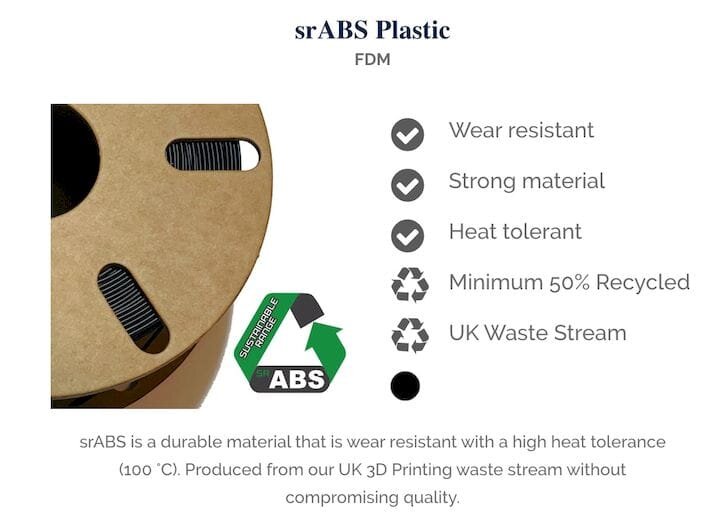![One of the recycled 3D print materials from Lancashire3D’s 3D print service [Source: Lancashire3D]](https://fabbaloo.com/wp-content/uploads/2020/05/image-asset_img_5eb08ea8b01e3.jpg) One of the recycled 3D print materials from Lancashire3D’s 3D print service [Source: Lancashire3D]
One of the recycled 3D print materials from Lancashire3D’s 3D print service [Source: Lancashire3D]
We received an interesting announcement from a 3D print service that seems to specialize in recycled 3D printing materials.
The service, UK-based Lancashire3D, says:
“It has become the first UK based studio to deliver on the circular production promise in which resources are reused again and again to benefit the 3D printing ecosystem and environment by reducing its waste and recycling on site.”
They say that there is no recycling facility in that region capable of handling copious 3D print waste, which includes failed prints, removed support materials or even the spools on which the original filament was held. They are now collecting such material and using it to produce their own filaments for re-use in their 3D print service.
They say they are reusing up to 95% of their in-house waste production thermoplastics and making fresh filament on-site so as to avoid pollution due to transport that would occur should they have shipped the material out to other parties for production.
Recycling 3D Printer Filament
The company anticipates recycling as much as 165kg of material per year using this approach. Their process will be called the “Sustainable Range” line of materials and apparently will be offered to the public at discounted prices.
An inspection of their materials page currently shows two such materials in the “Sustainable Range” category: ABS and (coming soon) PLA. It also shows another 15 different non-Sustainable Range materials, such as wood PLA, carbon fiber, ASA, etc.
The company also employs a number of other eco-friendly practices, such as providing recyclable eco-style packaging for their products.
I think this is a good step forward and one that other 3D print services should definitely consider. It’s possible that this approach could even be more profitable, as material is being reused.
Non-Sustainable Materials
At least on these specific materials. The other 15 materials provided by Lancashire3D are original and not recycled.
It is quite understandable that there is this breakdown of sustainable and non-sustainable products, however. Industry increasingly demands objects printed with more exotic engineering materials, and these are not as easily recycled.
That’s going to be a bigger issue as time passes and we drift further away from the use of ABS, PLA and PET as the main materials used in 3D printing.
The issue is sourcing a sufficient amount of consistent input material for recycling. I know that many other recycled filament operations tend to simply contract for a supply of consistent material from collection organizations. That might be from an urban trash company that sorts materials, or perhaps from a third world collection operation that picks up “only Pepsi bottles”. For this reason the usual material found in recycling operations is PET, normally used in drink bottles.
Strangely, Lancashire3D does not offer recycled PET, at least not yet. I suspect they simply don’t have enough volume in that material to justify setting up a new recycled product line.
Filament Recycling Challenges
And for the rest of the different materials, it would likely be an even longer time to build up the volume of scrap to justify, say, recycled carbon fiber filament.
There’s another problem: the scraps have to be identical. That means that if Lancashire3D is using a particular vendor’s mix for carbon fiber filament, ALL of the scraps have to be the same mix. It’s either that or you have to decompose the filaments down to basic materials and start from scratch, which is obviously economically infeasible.
3D printers produce a great deal of waste thermoplastic, but it’s really quite difficult to recycle it unless the circumstances are just right.
But it is good to see that Lancashire3D is doing something, and setting an example for other 3D print services.
Via Lancashire3D

